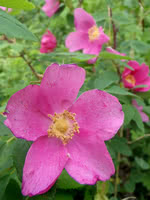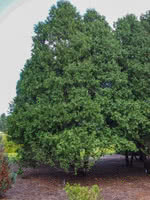Mon-Fri 9am - 5pm Mountain time
Hedge Rose vs Eastern White Cedar (Arborvitae)
Rosa rugosa x Rosa woodsii (Improved hybrid developed by PFRA)
Thuja occidentalis
Hedge Rose is a long-lived, fast-growing shrub. It bears similar flowers to the Alberta Wild Rose. Birds will love its deep red rose hips. Hedge Rose will thrive in a wide variety of soils and is a tall rose forming a useful hedge.
Excellent for shelterbelts, ecobuffers, and wildlife habitat plantings. Continuous flowering makes it attractive to pollinators. Many song and game birds utilize this tree for food and habitat.
In use since the early 1900s, this hybrid was originally developed at the PFRA's Indian Head Agroforestry Center.
Eastern White Cedar is a slender growing conifer often used as a decorative tree or a hedge. This tree is an effective privacy screen even in winter and a great long term solution to urban crowding or a drab yard.
Hedge Rose Quick Facts
Eastern White Cedar (Arborvitae) Quick Facts
In row spacing: 0.3 m (1.0 ft)

